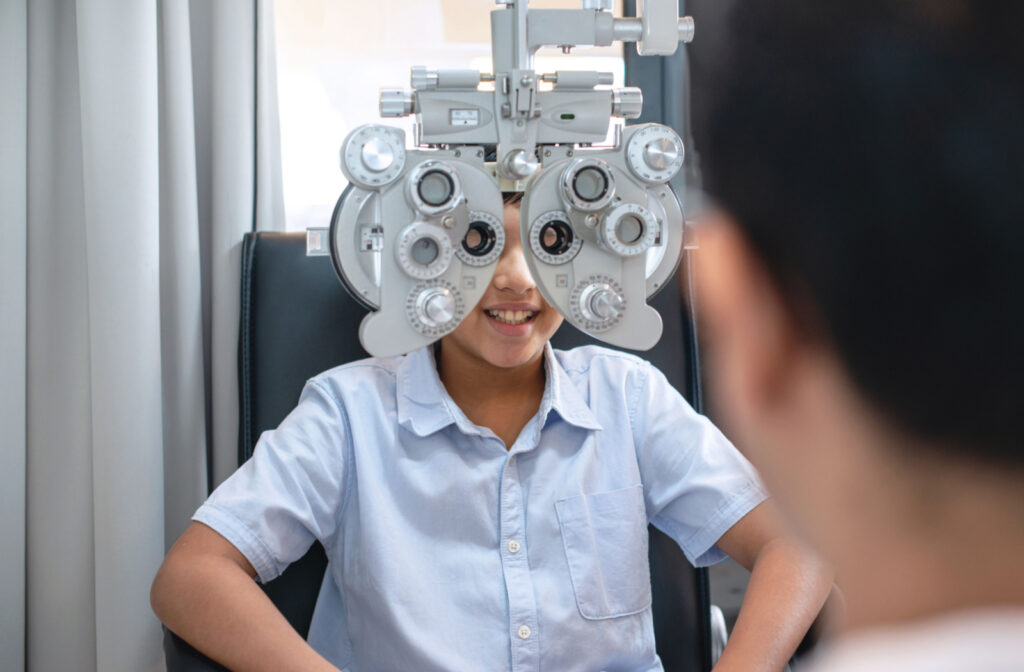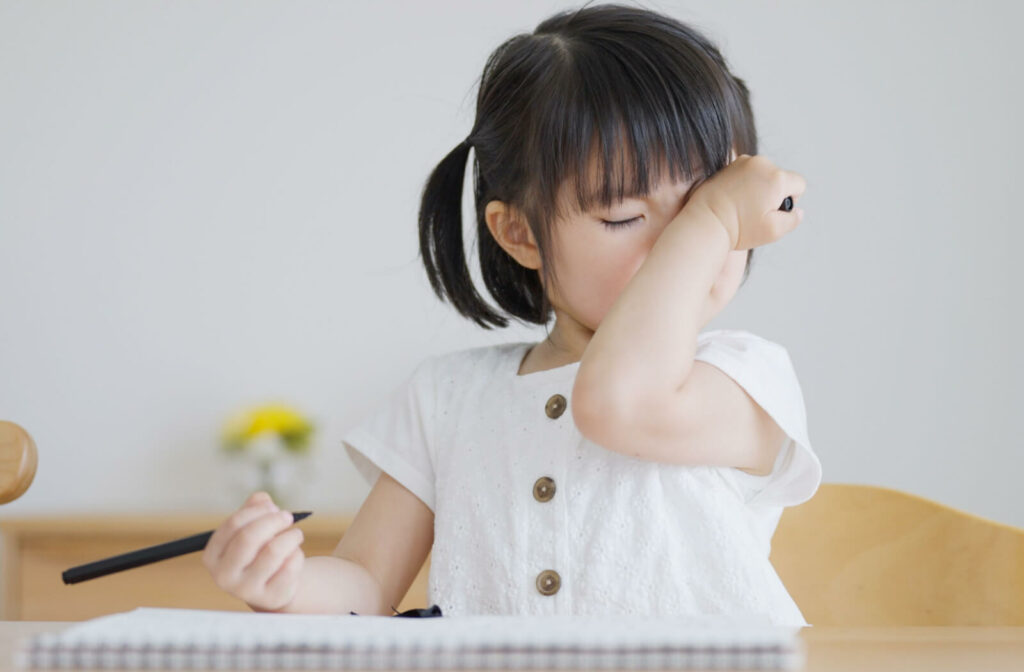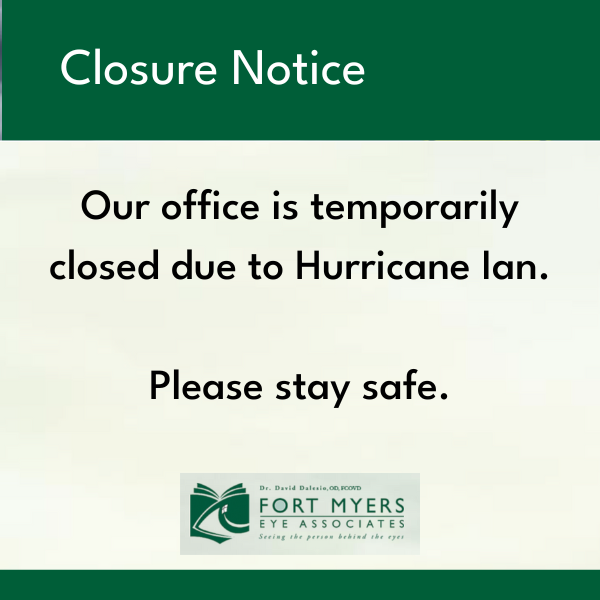As a parent, you’re probably constantly watching your child’s every move. So, when you notice them rubbing their eyes, you may be inclined to worry, especially if you’ve heard that this could be a sign of myopia (nearsightedness). While it’s true that myopia is becoming increasingly common, particularly among children, there’s no need to panic just yet.
The most common cause for eye rubbing is simply tiredness, and many other possible explanations exist. However, if you notice persistent and excessive eye rubbing in your child, it could be a sign of myopia, particularly if there’s a family history. If you’re unsure, an optometrist can look for signs of myopia during a comprehensive eye exam.
Is Eye Rubbing Always a Vision Problem?
First, let’s start with the most common cause of eye rubbing in kids: tiredness. Just like adults, when children are tired, they tend to rub their eyes in an effort to soothe them. If your child is otherwise healthy and their eyes look and function well, this is likely the explanation for their behavior.
However, if you observe your kid rubbing their eyes persistently, then you should consider seeking professional advice, particularly if there’s a family history of myopia.
What is Myopia?
Myopia, or nearsightedness, is a type of refractive error of the eye that causes blurry distance vision.
In a healthy eye, light enters through the clear front dome called the cornea and focuses on the retina at the back of the eye. However, with myopia, the eye has grown too long, or the cornea has become too curved. Because of this, the light focuses in front of the retina, causing far-off objects to appear blurry. Myopia usually develops in childhood and adolescence and can progress until age 20.
The exact cause of myopia is not known, but genetics and environmental factors are believed to play a role. If one or both of your parents have myopia, you are at a higher risk of developing the condition. Studies have also shown that spending more time indoors and reading, using electronic devices, or doing other close work can increase the risk of myopia.
Myopia is becoming increasingly more common among children, with studies showing that by 2050, it could affect almost 50% of the population. However, it’s important to understand that there are ways to prevent or slow its progression.
Vision Therapy for Myopia
Vision therapy is a customized treatment program designed to improve visual skills and abilities. These skills include eye-tracking, focusing, eye-teaming, and visual processing—all skills essential for learning. Up to 80% of learning is visual, so you can imagine how tough growing up can be with a vision issue.
Vision therapy can improve visual skills and reduce eye stress, allowing them to work more efficiently. This can slow down or even halt myopia progression.
Vision therapy can also enhance overall visual function. It can improve reading and learning abilities, reduce eyestrain and fatigue, and even enhance sports performance. Myopia isn’t the only condition vision therapy can address either. It can also help children with other visual problems, such as amblyopia (lazy eye) and strabismus (crossed eyes).
What Does Vision Therapy Look Like?
A typical vision therapy program for myopia can involve exercises and activities to improve visual skills vital for learning and thriving. These can include computer-based programs, visual-motor activities, and even outdoor activities. The program can also include regular eye exams and visual assessments to monitor progress and adjust the treatment plan accordingly.
Vision therapy is not a one-size-fits-all solution. It’s important to consult with a qualified optometrist or ophthalmologist to determine if vision therapy is suitable for your child. Factors such as age, myopia severity, and other visual problems can all be considered in the decision-making process.

Other Reason Your Toddler May Be Rubbing Their Eyes
While tiredness, myopia, and visual skills are some of the most reasons for your little one rubbing their eyes, other possibilities include:
- Dry eyes
- Allergies and irritants
- Eye strain and excessive screen time
- Foreign objects in the eye (dust, eyelashes)
- Eye infections
When in doubt, visit your eye doctor. A comprehensive eye assessment can determine why you child is rubbing their eyes.
When Should My Child See an Optometrist?
While children have plenty of harmless reasons to rub their eyes, if you suspect your young one is doing it for some reason other than tiredness, it may warrant a trip to the doctor just to be safe.
The American Optometric Association recommends children have their first eye exam at 6–12 months of age, again at 3 years old, and annually after that. As they grow, their eyes can change rapidly, so it’s important to keep up with their changes and help promote healthy development.
Aside from persistent eye rubbing, some signs of vision problems you may notice in your child include:
- Complaints of eye discomfort or strain
- Frequent blinking
- Avoiding reading or holding reading material close to the face
- Covering one eye
- Short attention span
- Frequent headaches
- An eye turning in or out
Give Your Child the Gift of Healthy Vision
Myopia can be a challenging condition for children and their families, but vision therapy offers a promising treatment option. It can slow down or halt myopia progression and enhance overall visual function. By being proactive and paying close attention to your child’s visual health, you can help them protect their eyesight for years.
Fort Myers Eye Associates can work with you to determine if vision therapy is suitable for your child. Book your children’s eye exam today, and let your child begin exploring the world with healthy vision.





